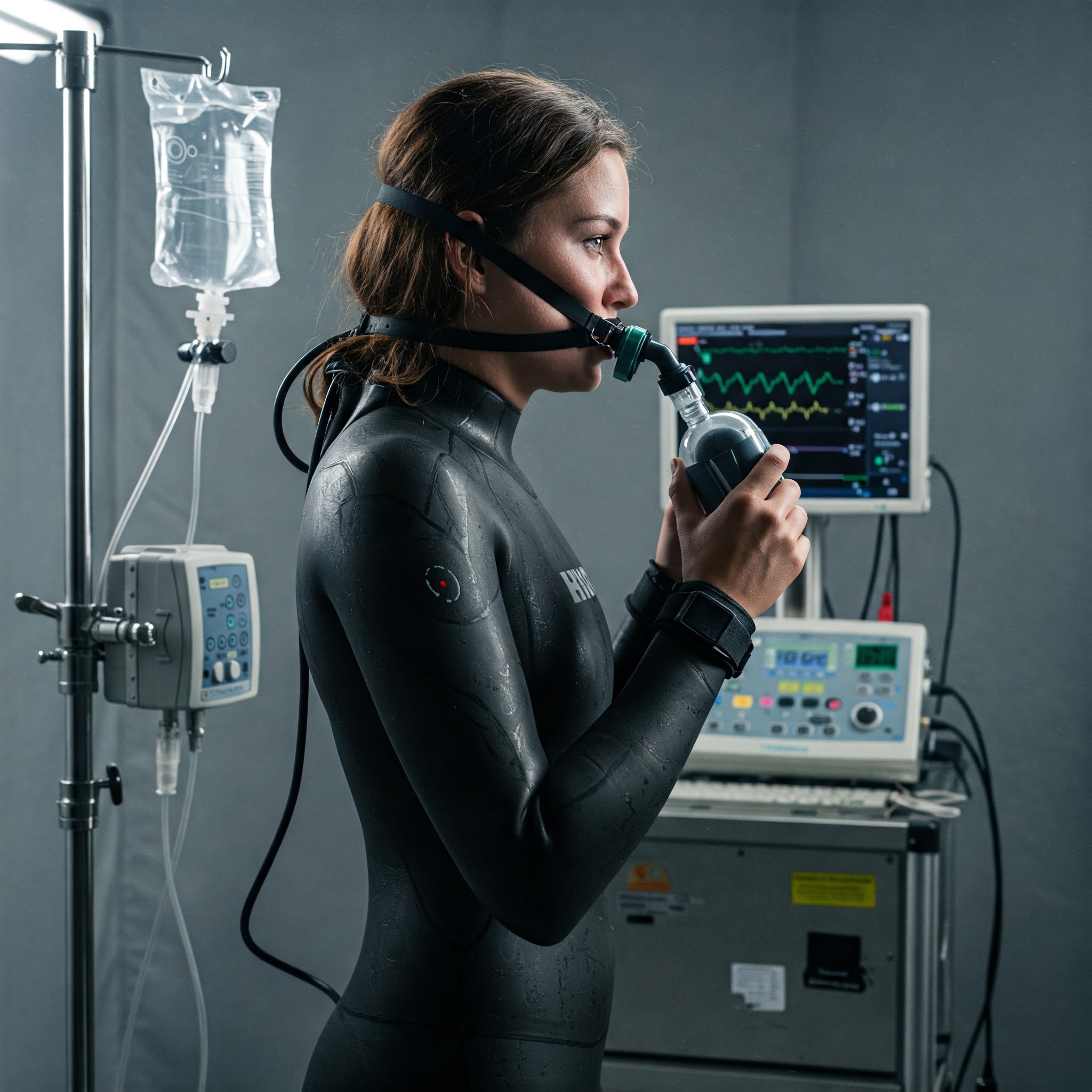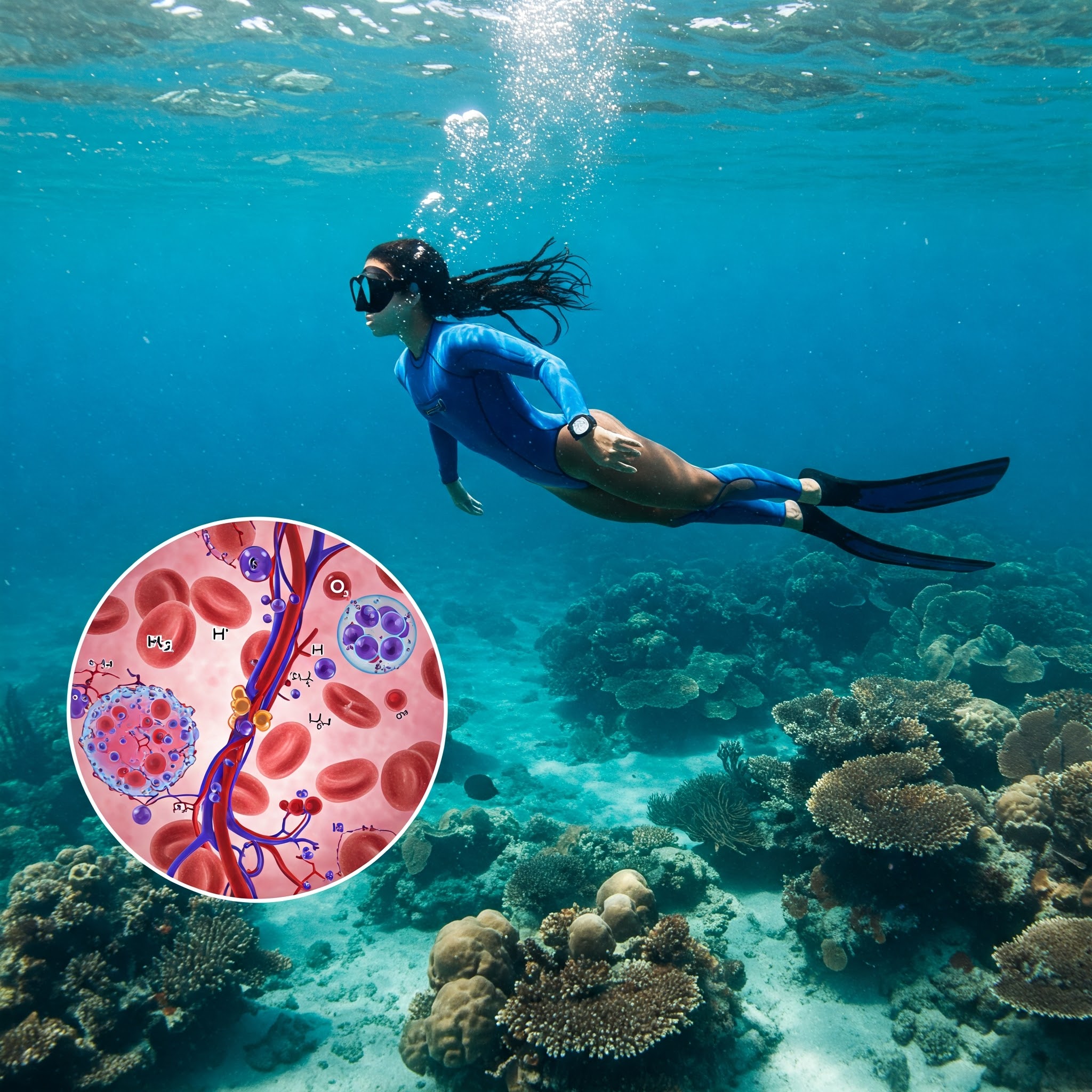Freediving, the art of diving underwater on a single breath without the use of breathing apparatus, has fascinated scientists for decades. Elite freedivers can hold their breath for extraordinary periods—some exceeding 11 minutes—and reach depths beyond 100 meters. These feats raise intriguing questions about human physiology and adaptation. How do these athletes manage oxygen consumption so efficiently? What cellular adaptations occur in response to repeated breath-holding and extreme pressure?
Recent research has begun to unravel the remarkable physiological changes that occur in elite freedivers, particularly at the cellular level. This article explores the fascinating adaptations that allow freedivers to push the boundaries of human capability.
The Mammalian Dive Response: Our Aquatic Heritage
When humans immerse their faces in water, particularly cold water, a set of physiological responses collectively known as the "mammalian dive reflex" is activated. This evolutionary adaptation, shared with marine mammals like seals and dolphins, helps conserve oxygen during underwater excursions.
The dive reflex triggers three primary responses:
- Bradycardia: A significant slowing of the heart rate, sometimes by up to 50% in trained divers
- Peripheral vasoconstriction: Blood vessels in the extremities constrict, redirecting blood flow to vital organs
- Splenic contraction: The spleen releases stored red blood cells, increasing oxygen-carrying capacity
While these responses are innate in all humans, elite freedivers show enhanced dive reflexes. Research published in the Journal of Applied Physiology found that experienced freedivers demonstrate more pronounced bradycardia and peripheral vasoconstriction compared to untrained individuals, suggesting that these responses can be strengthened through training.
Cellular Adaptations: The Microscopic Revolution
Beyond these systemic changes, fascinating adaptations occur at the cellular level in trained freedivers:
1. Mitochondrial Modifications
Mitochondria, often called the "powerhouses" of cells, are responsible for producing energy through aerobic respiration. Studies comparing muscle biopsies from elite freedivers with those from non-divers have revealed significant differences in mitochondrial function.
Research from the University of Copenhagen found that elite freedivers' muscle cells contain mitochondria that operate more efficiently under low-oxygen conditions. These mitochondria produce less reactive oxygen species (ROS)—harmful byproducts of metabolism—during hypoxia, reducing cellular damage during prolonged breath-holds.
"The mitochondria of elite freedivers appear to have adapted to function more efficiently with less oxygen, similar to what we observe in deep-diving marine mammals." — Dr. Erika Schagatay, Mid Sweden University
2. Enhanced Oxygen Storage Capacity
Myoglobin, a protein in muscle tissue that stores and transports oxygen, shows significantly higher concentrations in elite freedivers. A study in Frontiers in Physiology found that regular freediving training increases myoglobin content in skeletal muscles by up to 30%, enhancing oxygen storage capacity.
This adaptation mirrors what's observed in marine mammals like sperm whales, which have myoglobin concentrations up to 10 times higher than terrestrial mammals, allowing them to dive for extended periods.
3. Hypoxia-Inducible Factor (HIF) Pathway Activation
The HIF pathway serves as the body's oxygen sensing mechanism, triggering adaptive responses to low oxygen conditions. Research published in Cell Metabolism demonstrated that regular breath-hold training activates the HIF pathway, leading to increased production of erythropoietin (EPO), which stimulates red blood cell production.
Elite freedivers show elevated baseline levels of HIF-1α, the primary regulator of cellular hypoxic responses, suggesting a persistent adaptation to intermittent hypoxia.
Practical Applications for Recreational Freedivers
Understanding these cellular adaptations has practical implications for freediving training at all levels:
- Gradual progression: Cellular adaptations develop over time. Training should progress gradually to allow these adaptations to occur.
- Consistency over intensity: Regular, moderate breath-hold training appears more effective at triggering cellular adaptations than occasional extreme sessions.
- Cross-training benefits: Activities that improve mitochondrial function, such as endurance training, can complement freediving-specific training.
- Recovery importance: Adequate recovery time between training sessions allows cellular adaptations to consolidate.
Future Research Directions
The field of freediving physiology continues to evolve, with several exciting research directions:
- Genetic factors that may predispose individuals to enhanced oxygen efficiency
- Long-term health effects of regular breath-hold training
- Potential therapeutic applications for conditions involving tissue hypoxia
- Comparative studies between human freedivers and marine mammals
As research techniques advance, our understanding of these remarkable adaptations will continue to deepen, potentially revealing new insights into human physiological potential.
Conclusion
The cellular adaptations observed in elite freedivers represent a fascinating example of human physiological plasticity. Through regular training, the body undergoes remarkable changes at the cellular level that enhance oxygen efficiency and tolerance to extreme conditions.
For recreational freedivers, understanding these adaptations provides valuable context for training approaches and progression. While we may not all achieve the extraordinary feats of elite athletes, the same adaptive mechanisms are at work in all who practice this ancient art, connecting us to our evolutionary past and revealing the remarkable adaptability of the human body.


